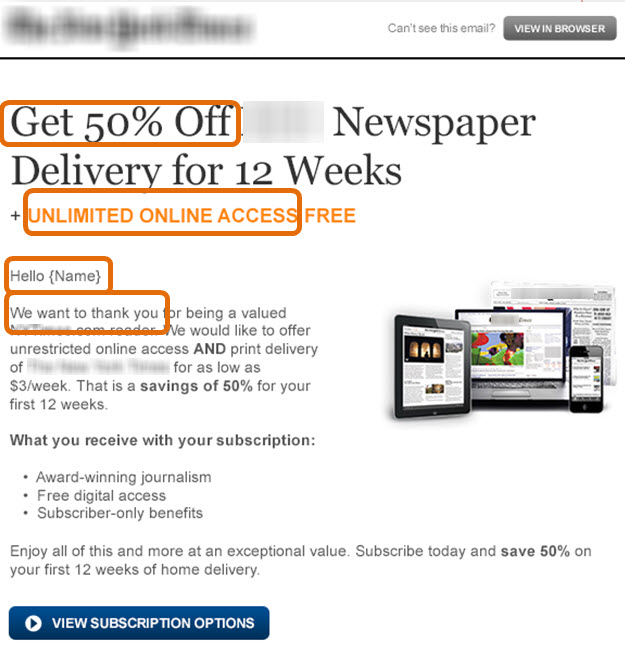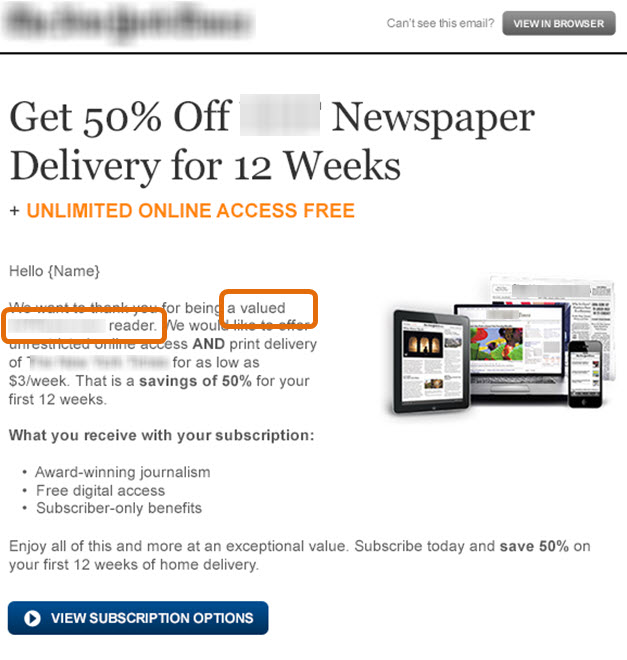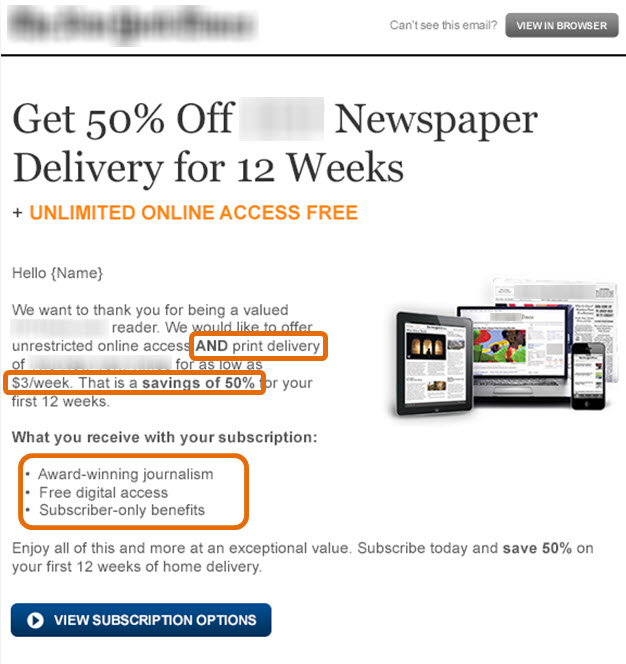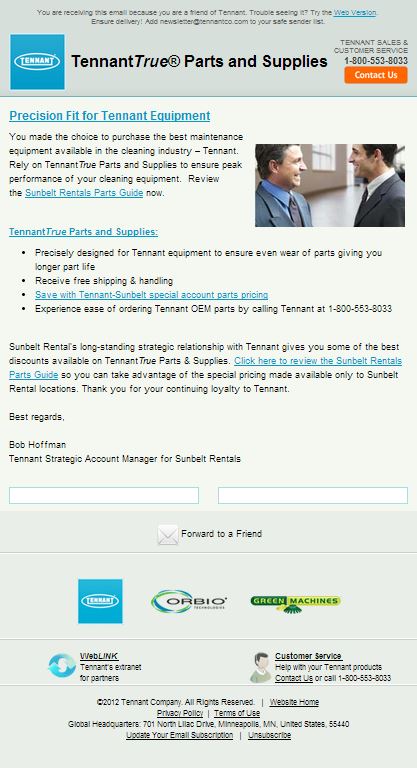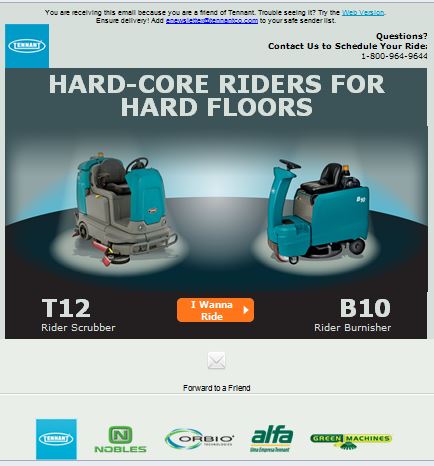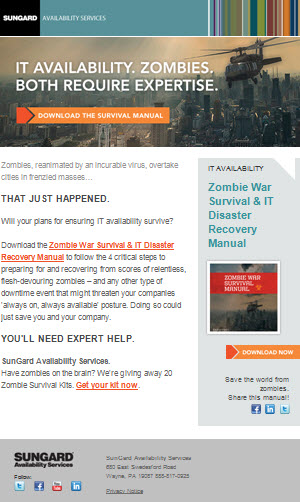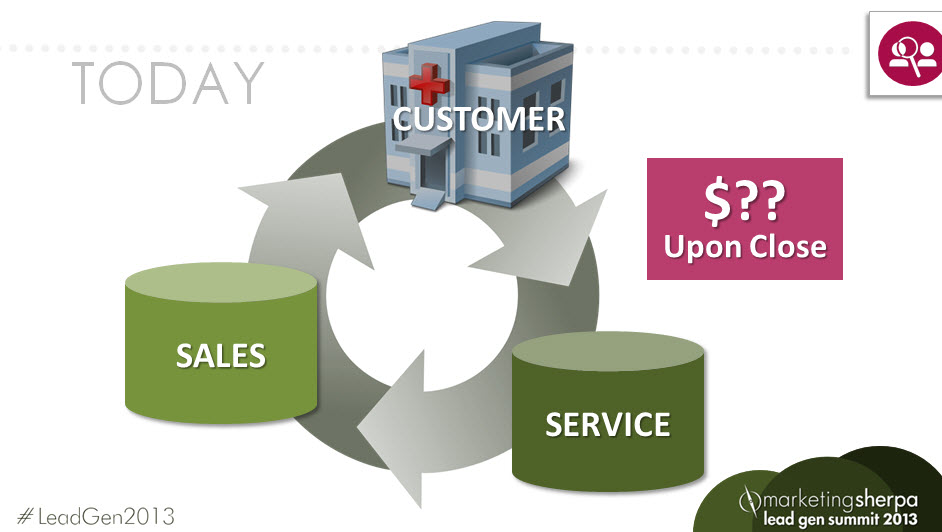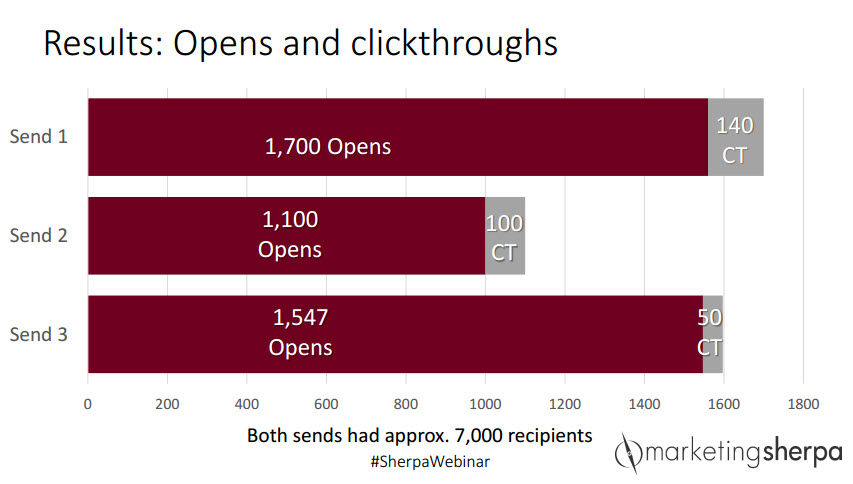Originally published on B2B LeadBlog
As the holiday season quickly approaches an end, and marketers prepare to make 2014 their best year yet, we pulled together the top blog posts on the B2B Lead Roundtable Blog to share the most popular topics, chosen by marketers just like you.
In 2012, the top focus for B2B marketers was understanding and leveraging social media. With the quickly evolving nature of this medium, it is no surprise it was also the top category marketers wanted to learn more about in 2013.
Read on for five more areas of focus that were top of mind in the B2B realm in 2013.
Topic #1. Use social media to generate leads and connect with prospects
Social Media Marketing: Dell reveals how it turns thousands of brand detractors into fans
This post was the most tweeted B2B Lead Roundtable Blog post in 2013 with, at the time of this writing, 199 shares. Andrea Johnson, Copywriter, MECLABS, revealed how Dell leveraged social media to reach out to customers and monitor conversations online.
Through Dell’s efforts in establishing its very own Social Media & Community University, which 105,000 employees have attended, and its Social Outreach Services, Dell has turned thousands of brand retractors into advocates.
Out of the approximately 3,000 issues the Social Outreach Services team receives a week, all but 3% come to a resolution and about 40% to 50% of the people who initiated them speak positively of Dell afterwards.
“Social media has made more of an impact, significantly on B2B than B2C. For us, B2B is about relationships, and social media is all about relationships,” Richard Margetic, Director of Global Social Media, Dell, said.
In addition to connecting with customers, social media is also an outlet for generating leads.
Honorable Mention: Lead Generation: 5 tips to generate leads faster on LinkedIn
In this blog post, Ellie Mirman, Head of SMB Marketing, HubSpot and Shreesha Ramdas, General Manager, Leadformix, discussed five tactics for generating leads using LinkedIn.
Through audience segmentation, building credibility, providing valuable content, taking advantage of paid LinkedIn programs, and communicating effectively, B2B marketers can utilize LinkedIn to its full potential for lead gen.
Topic #2. Content marketing is becoming more essential for success
B2B Marketing: 3 reasons for adopting video content into your marketing mix
Coming in second place at 141 tweets, John Tackett, Manager of Editorial Content, MECLABS, discussed three reasons B2B marketers should adopt video content into their content marketing strategies.
“Not only is video a great way to share your story, it’s also a great way to build links back to your site. And, if users engage with your video, it helps to increase time on site,” Gaby Paez, Associate Director of Research, MECLABS, explained.
John also explained how it is projected that 77% of all Internet users will be viewing digital video content online by 2016. Therefore, it’s a great time to develop that aspect of content marketing into your own B2B efforts.
Honorable Mention: Lead Generation: Content among the most difficult tactics, but also quite effective
In the MarketingSherpa 2012 Lead Generation Benchmark Report (free excerpt at that link), the marketers surveyed indicated content marketing to be one of the most difficult tactics. However, it was also ranked as one of the most effective.
In this blog post, Daniel Burstein, Director of Editorial Content, MECLABS, shared some insights from your peers on content marketing.
“… It’s all about feeling the pulse of your Web visitors. The power of content is that you can use different content pieces to speed up their pulse and get them to a purchasing decision by moving them deeper into the conversion funnel. Aside of email, hardly any other tactic is as effective of a convincer as content,” Igor Mateski, Owner, WebMaxFormance, said.
Topic #3. Understanding your customers
Lead Generation: Who knows the customer better – Marketing or Sales?
“We all feel that we have a golden gut to some extent, especially when we’re interacting directly with customers.” – Daniel Burstein, Director of Editorial Content, MECLABS
In this blog post, Daniel discussed how to face a situation where sales and marketing departments are not aligned. Who really understands the customers better – Marketing or Sales?
Trust the data, not your gut. Are you choosing the appropriate keywords that will resonate with your audience the most?
When facing these types of challenges, use numbers to make your case on who knows the customer best.
Another method to discover what your customers want or need from you is to test your value proposition.
Honorable Mention: Lead Generation: How well do you really know what your customers want?
In this blog post, we learned that through testing value propositions, marketers can truly understand what your customers need.
Jon Ciampi, Vice President, Marketing, Business & Corporate Development, CRC Health, learned his customers craved trust, not luxury.
Using this, he reinvented his lead funnel and applied his discoveries to everything from landing pages to call scripts.
Testing a value prop can be tested through several key channels. Read on to discover which channels your peers are using.
Honorable Mention: Lead Nurturing: How a social business strategy can help you move from selling to helping your prospects
This year we heard from Todd Wilms, Head of Social Strategy, and Adriel Sanchez, VP, Demand Generation, both of SAP, at MarketingSherpa Lead Gen Summit 2013.
Todd and Adriel presented how engaged in a social business strategy to help teams around the world connect with local audiences.
“This idea of moving from ‘sell’ to ‘helping your customers buy’ is at the heart of social business. It’s a model that the customer is going to make the decisions already, they’re going come to you when they are ready,” Todd said.
Topic #4. Capitalizing on email for lead gen
Email Marketing: 4 steps to relevancy 85% of B2B businesses probably aren’t taking
Utilizing email is not a new marketing tactic, but many B2B organizations are not taking advantage of its potential to generate leads.
In this post, Brian Carroll, Executive Director of Revenue Optimization, MECLABS, discussed the importance of email as a tactic for B2B marketing and how to stay relevant with your audience.
Topic #5. Start developing a mobile site
Mobile Marketing: What 4 top B2B companies can teach us about mobile
Gaby Paez, Senior Business Intelligence Manager, MECLABS, reviewed the mobile sites of some fortune 500 B2B companies to gain a sense of how these successful enterprises approach mobile marketing.
What she found was shocking as out of 12 she selected for her review, only four total had a mobile site.
Although her pool of companies is small, this is an interesting find given the MarketingSherpa 2012 Mobile Marketing Benchmark Report, (free excerpt at that link), reveals that 52% of B2B marketers considered mobile marketing very important to influence their company’s growth in the next three years.
Read on to see how top B2B companies are incorporating mobile websites into their strategy.
With all of those great insights on how a B2B mobile site should function, this next blog post focuses on where to spend your mobile budget to make those ideas a reality.
Honorable Mention: B2B Mobile Marketing: 3 ideas on where to spend your next mobile budget
With 12% of Americans consuming their media through mobile phones, B2B marketers should be thinking seriously about their mobile sites.
In this blog post, Michael Groszek, Business Intelligence Manager, MECLABS, presented three ideas for balancing value and reducing friction on a mobile experience.
Topic #6. Leads 101— Back to basics
Intro to Lead Generation: How to determine if a lead is qualified
Finally, one of the top blog posts for 2013 took lead gen back to its roots. How should you be determining if a lead is qualified?
Daniel Burstein, Director of Editorial Content, MECLABS, explained that before marketers start qualifying leads, Sales and Marketing need to devise a universal lead definition.
“This involves a sales-marketing huddle since, much like good art, it is not only the artist but also the art viewer and buyer that must agree on a definition. To put it more bluntly – if Sales doesn’t think the lead is qualified, it ain’t qualified.”
From there, Daniel presented six methods, ranked in order of least to most difficult, of determining if a lead is qualified:
- Contact information
- Firmographics
- BANT
- Behavioral analytics and lead scoring
- Predictive analytics
- Hand raiser
Related Resources
B2B Marketing: 6 essentials for testing your teleprospecting
Lead Management: 4 principles to follow
Lead Generation: How using science increased teleprospecting sales handoffs 304%




